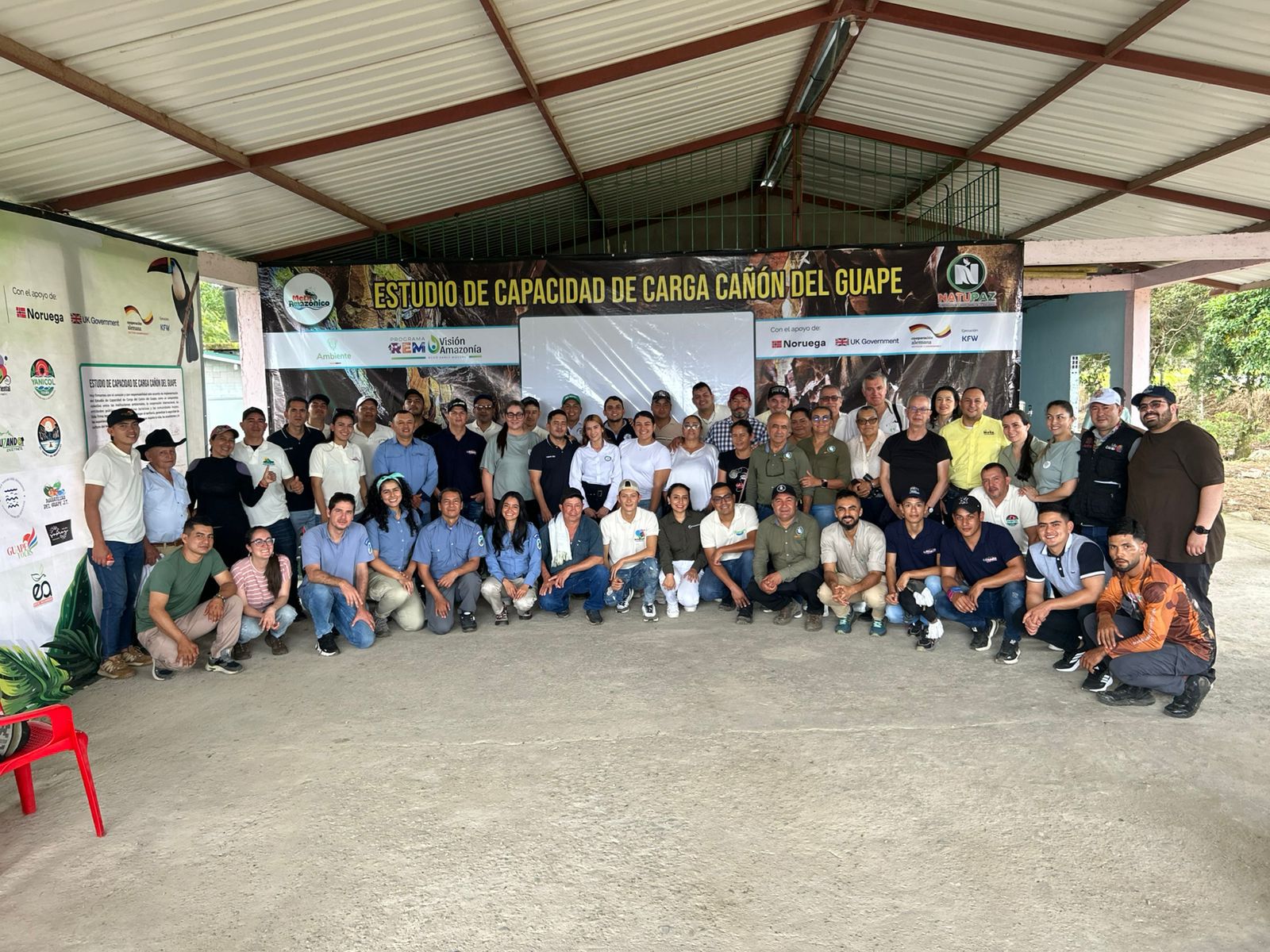The Guape Canyon, one of the most impressive nature destinations in the country, has already defined its carrying capacity.

In areas like the Guape Canyon in Meta, unique ecosystems, exceptional biodiversity, and growing tourist interest converge, so understanding its carrying capacity is essential for ensuring the balance of the territory.
But what is carrying capacity? The term refers to the maximum number of visitors an area can accommodate without damaging its ecological conditions, the quality of the experience, or the well-being of local communities.
In this context, on June 19, 2025, a study was delivered that marks an unprecedented technical and social advance in Meta.
Developed by Natupaz, with the support of the REM Visión Amazonía Program, the study on the carrying capacity of the Guape Canyon establishes clear parameters for how much pressure the territory can withstand and under what conditions tourism can be integrated without jeopardizing its ecological or cultural integrity.

This is the first carrying capacity study conducted with the communities of Meta. Photo: Visión Amazonía
"This is a historic study because it's the first one conducted using the methodology we implemented, with governance spaces where communities have been able to participate," said Blanca Helena Soler of Natupaz.
Science with local knowledge The value of this study lies in its construction. According to Ricardo Lara, leader of the REM Visión Amazonía Program's Sectoral Pillar, the approach integrates three pillars: "Governance in the territory, which includes the Meta Institute, Cormacarena, and National Parks. But there is also an exchange of knowledge with the people in the territory and a technical-scientific component that gives it added value."
The document also considers biotic, social, cultural, and current use variables and proposes concrete scenarios for regulating tourism activity without endangering the ecosystem. Its contributions include defining entry limits, regulated use zones, and guidelines for visitors and tour operators.

The tool was delivered on June 19 and will regulate nature tourism. Photo: Visión Amazonía
More than a diagnostic, the Guape Canyon study functions as a territorial planning tool. It establishes limits for tourism, but through dialogue and shared knowledge. This participatory construction promotes ownership of the process and allows conservation and tourism development to advance hand in hand.
"We are creating an initiative where everyone knows we can achieve sustainable local development by caring for the forest, the water, and everything around us," explained José Yunis Mebarak, general coordinator of the REM Visión Amazonía Program.
The study not only benefits Guape. It also opens the door for other natural destinations in the country to anticipate the impacts of tourism and define their regulations based on evidence and participation.
"If it's regulated and socially constructed, this has significant value because people have a tailor-made solution to continue engaging in nature tourism," added Ricardo Lara.
Tourism that understands the territory The Guape experience reaffirms that sustainable tourism is built on a true understanding of the territory and with the active participation of its inhabitants. It is not an externally imposed activity, but rather a collective decision.
Specifically, the process of developing the carrying capacity study strengthened local capacities. For example, communities participated in tours, workshops, and planning exercises, understanding that opening their landscapes to tourism can be an opportunity for development, but also a risk if not managed responsibly and with clear boundaries.
“The study empowered the communities and transferred important knowledge to the area. And if you ever visit this place, walk its trails, look at its waterfalls, or listen to its birds, you can do so with the certainty that this impact has been anticipated, regulated, and shared with those who protect it,” concluded Yunis Mebarak.
Environment and Health Journalist
eltiempo



